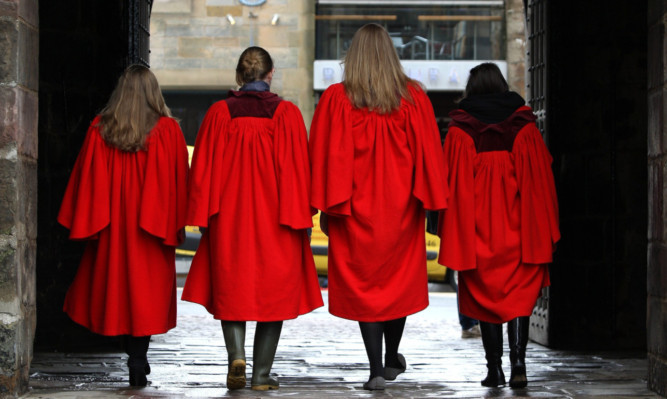St Andrews University now contributes more than £484 million a year to the Scottish economy and supports more than 8,900 full-time jobs.
The findings of a new economic impact report reveal the university has increased its economic impact by £179m a year since 2008-09.
St Andrews has 7,777 full-time students and employs 2,355 staff.
The independent report, Economic Impact of the University of St Andrews 2011-12, produced by Midlothian-based BiGGAR Economics, found that for every £1 of public teaching and research grant invested in St Andrews, the university now returns £12.10 to the Scottish economy.
The number of full-time jobs supported by St Andrews has fallen from 9,197 in 2008-09 to 8,913 last year, however.
The university says this is due to general changes in the economy and particularly a requirement to spend more on rising external utilities charges, even though its energy consumption has flatlined for the last two years.
University leaders say the study demonstrates that Scotland’s universities are generators of significant wealth in local and national economies, rather than simply consumers of public funds.
St Andrews University received approximately £40m last year in public funding from the Scottish Funding Council but returned £484 million to the Scottish economy.
The report authors looked at the impacts of core university spending, staff and student spending, business and spin-out activity, capital spend, tourism and community projects in financial year 2011-12.
By themselves, St Andrews students contributed £53.9m and supported 1,791 full-time jobs in Scotland through direct spending, part-time work and international students coming to Scotland and staying on to work.
In St Andrews itself, the student impact was £36.4m a year, supporting 1,401 jobs.
Overall, the university generated £200.8m for the St Andrews local economy, directly supporting 4,586 jobs in and around St Andrews and was responsible for 60% of all employment in the town.
St Andrews commercialisation and spin-out activities made £26.1m for the Scottish economy and supported 324 full-time jobs.
The study also looked at the graduate premium the longer term effects of the university’s graduates on productivity in the economy.
The lifetime graduate premium of a single year’s cohort of graduates of the university was £15m in the St Andrews economy and £95.9m in the Scottish economy.
St Andrews University chief operating officer Derek Watson said: “Our primary mission is and always will be the pursuit of excellence in education and research, but this analysis demonstrates that Scotland’s universities not only generate knowledge, but crucial wealth and employment.
“For every pound of Scottish Funding Council grant we receive, we generate and return £12 to economy. Or to turn it on its head, for every pound that St Andrews loses, Scotland will lose £12.”
